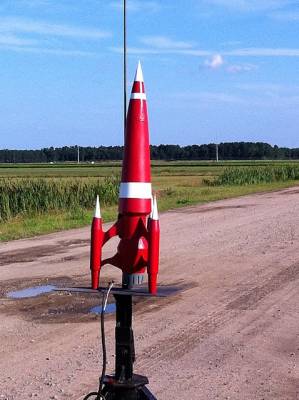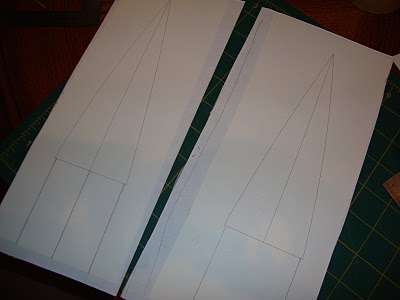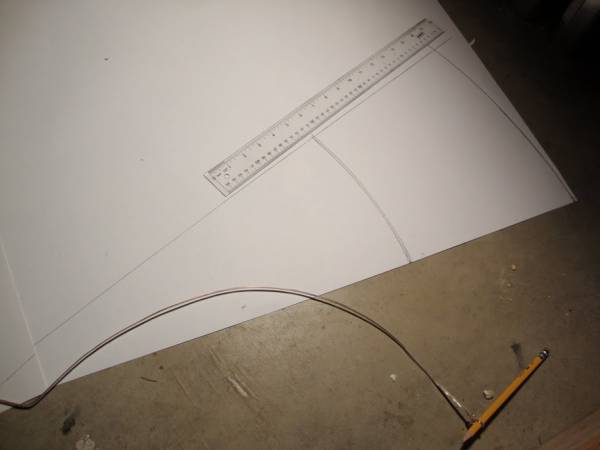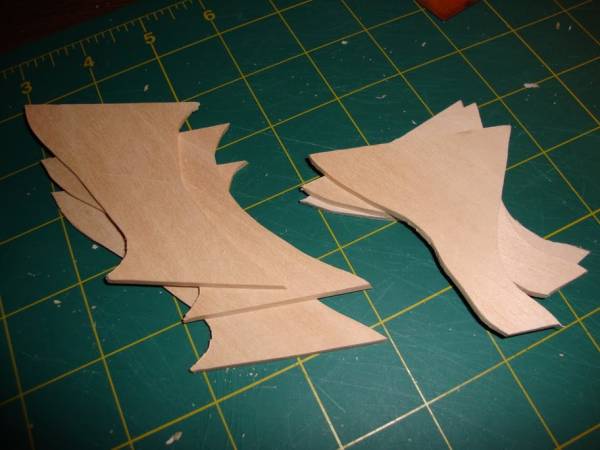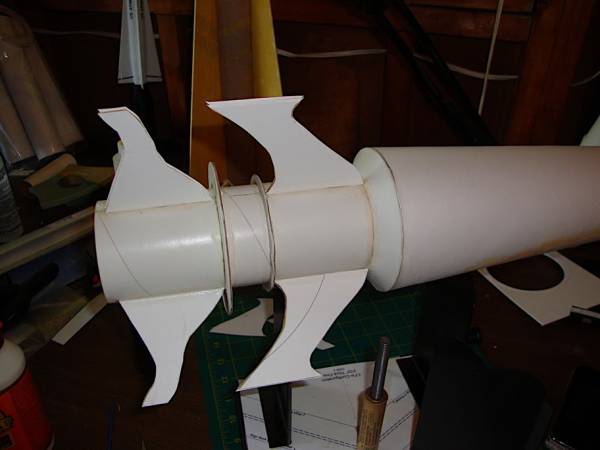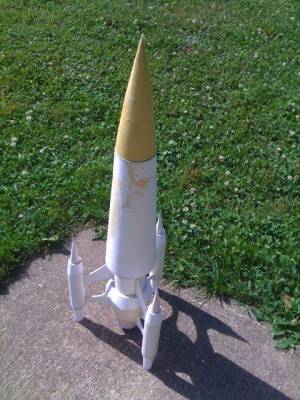Velvet Ant - 2010 Design This Spaceship Contest Entry
By Peter Stanley
2011-06-14
This is my entry for the Design This Spaceship Contest. The dry weight is just over 2 lbs, and it is 27.5" tall. It has a 2.6" center tube which runs from the bottom up to the base of the nose cone. I flew it three times in June 2011 at Orangeburg SC. Each flight was powered with a G motor, twice on a G76 and once on a G64. I lost the nose cone on the last flight, and not sure if I'll replace it. It flew beautifully though. I named it Velvet Ant because I think it resembles one if you look at it backwards.
Flights
2011-06-14
I flew the Velvet Ant three times. The first two flights were on a G76-7. The third flight was on a G64-10. I used a Jolly Logic AltimeterTwo on each flight to record flight data.
On the pad before the first flight.
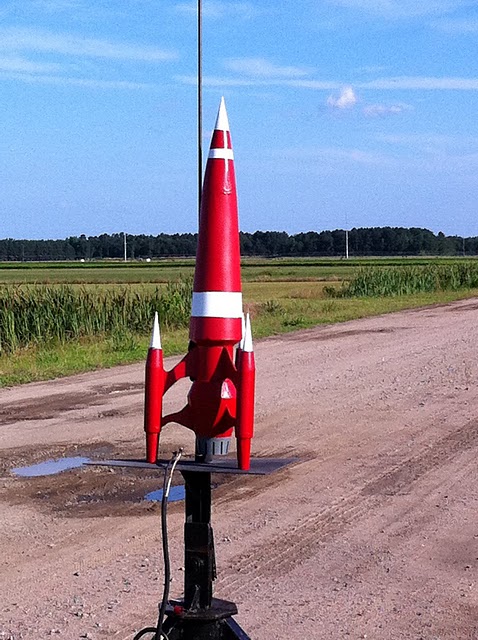
First flight video of Velvet Ant on a G76-7. The flight was awesome, except the bottom part of one of the pods popped off at landing. I didn't think it would affect stability so I kep flying it.
Flight data from first flight:
Altitude 887 ft
Speed 172 mph
Burn Time 1.3 seconds
Peak Acceleration 13.5 Gs
Average Acceleration 6.1 Gs
Coast to Apogee Time 6.9 seconds
Apogee to Ejection Time -.3 seconds
Ejection Altitude 855 ft
Descent Rate 8 mph
Flight Duration 75.2 seconds.
I lost the video for flight 2, but here is a pic after it landed.
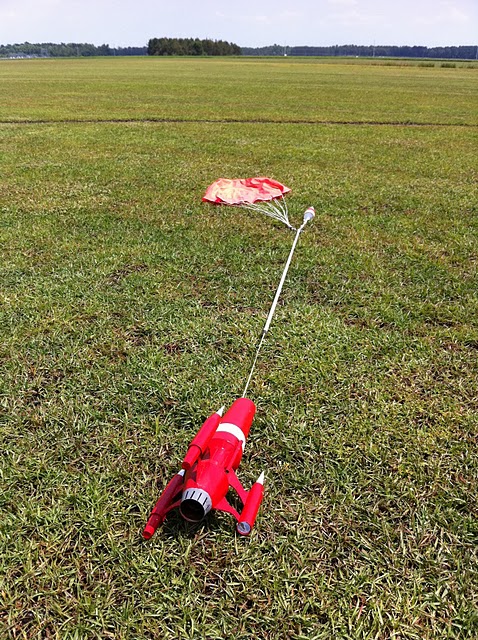
Flight data from second flight:
Altitude 901 ft
Max velocity 185 mph
Burn time 1.3 seconds
Peak acceleration 15.4 Gs
Average accleration 6.7 Gs
Coast to apogee time 3.9 seconds
Apogee to ejection time -.1 seconds
Ejection altitude 843 ft
Descent rate –
Flight duration — (didn’t record this or descent rate)
Flight 3 on a G64-10. Flight and recovery were successful, but the nose cone came off after deployment.
Flight data from third flight:
Altitude 828 ft
Max velocity 162 mph
Burn time 1.8 seconds
Peak acceleration 15.8 Gs
Average accleration 4.2 Gs
Coast to apogee time 5.9 seconds
Apogee to ejection time 3.9 seconds
Ejection altitude 593 ft
Descent rate 7 mph
Flight duration 64.4 seconds
Nose Cone
2011-06-20
I started with the nose cone. I explored several ways to go about it, but decided to use a method similar to this article. I used a print-out of the nose cone from Rocksim, then created my parts based on that. I cut out the cross-arches from 1/16″ illustration board.
I made 8 fin alignment guide printouts from VCP for the center braces. I used spray adhesive to attach them to 1/16" illustrator board, then cut what I needed open.
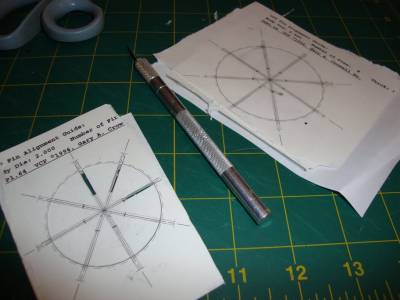
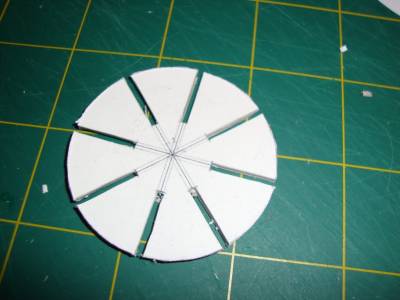
I used 2-part expanding foam to fill everything.
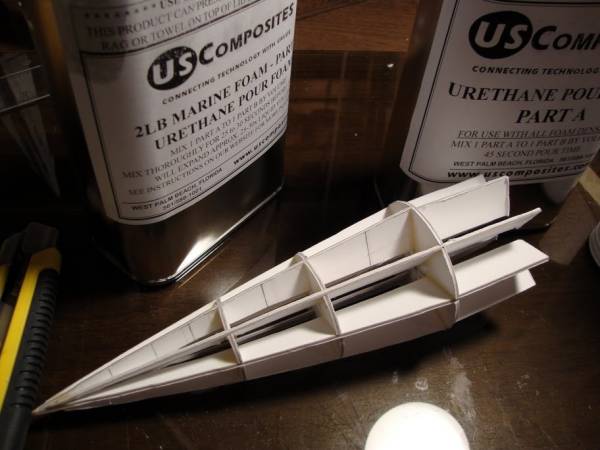
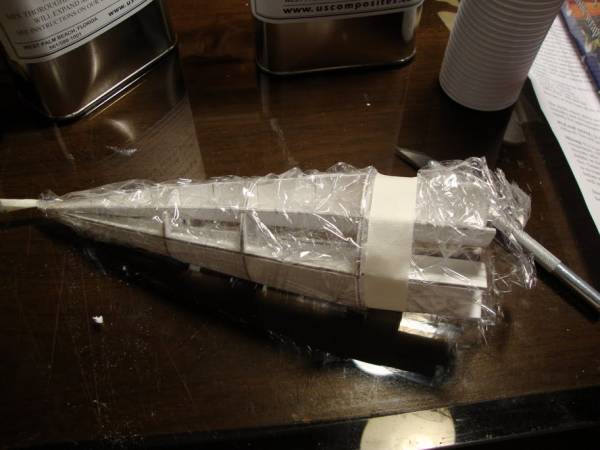
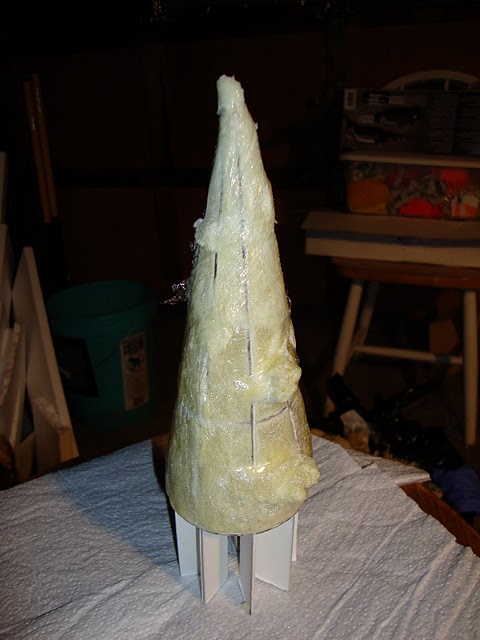
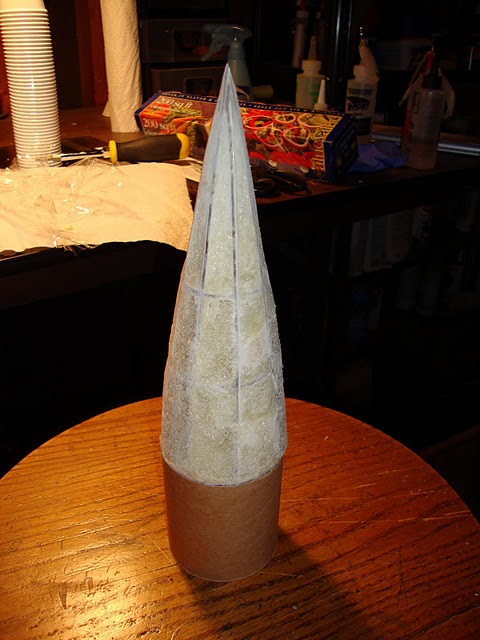

I used lots of fill n finish over the foam, and eventually covered in light fiberglass.
Forward Body Section
2011-06-21
The forward section is a conical shroud filled with expanding foam. The top fits around the top edge of the 2.6" body tube. The bottom fits around a centering ring on the 2.6" body tube. I figured the dimensions myself using a calulation in Tim Van Milligans Model Rocket Design and Construction book, but later found this tool which does the same thing. The dimensions of this thing are huge. I had to use a full piece of 28″ length poster board, and added a piece to paper to extend it. I marked off the small and large radius, and marked the angle using a protractor. I drew the line out at that angle. I made a make-shift compass using a pencil with a piece of wire tied to it. I held one end at the beginning, pull the pencil tight at each radius and drew my arc.
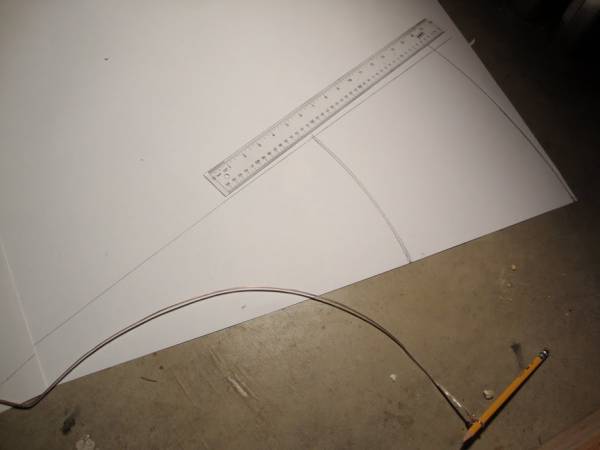
I formed the shroud and filled the empty space with two-part foam. I had to do this twice. There was an unfilled area the first time. I applied Fill N' Finish over the second patch job, and sanded everthing down.
Fins
2011-06-21
I printed the fin tempate from Rocksim and cut them out on 3/32" bass wood. I attached them using the Standard Rockets Assembly tool (which is really nice btw). I attached the launch lug standoff between two sets of fins. I later covered the fins with card stock paper, and fiberglassed the joints.
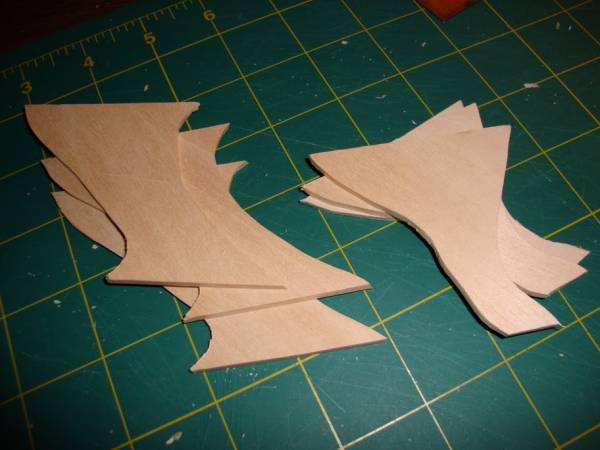
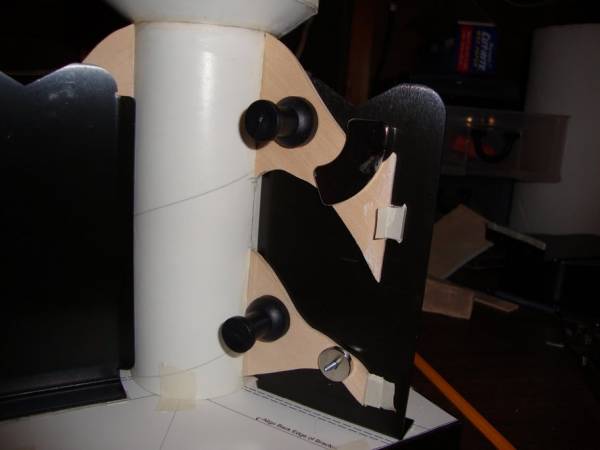
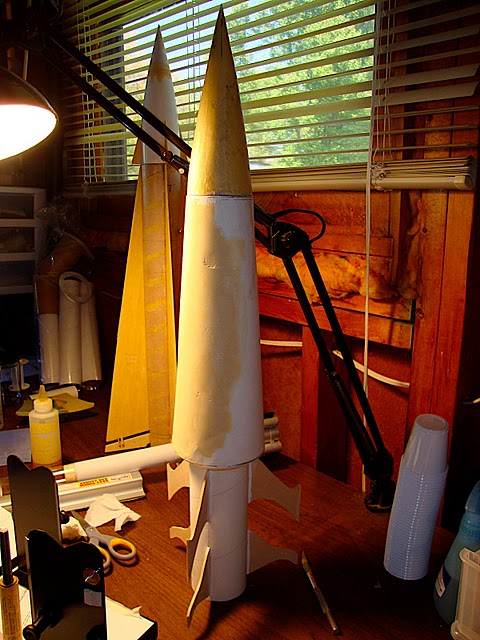
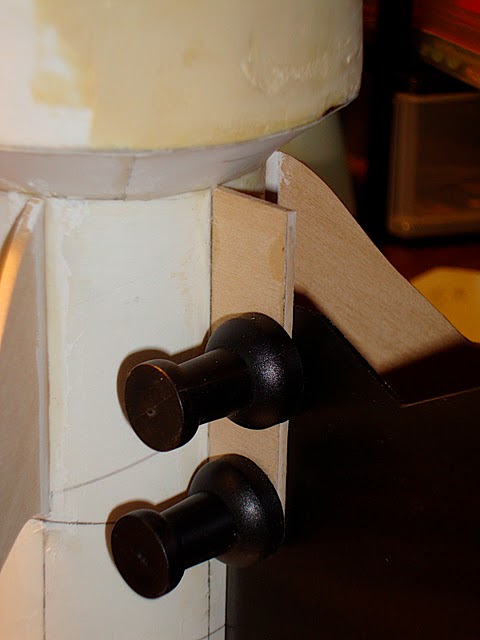
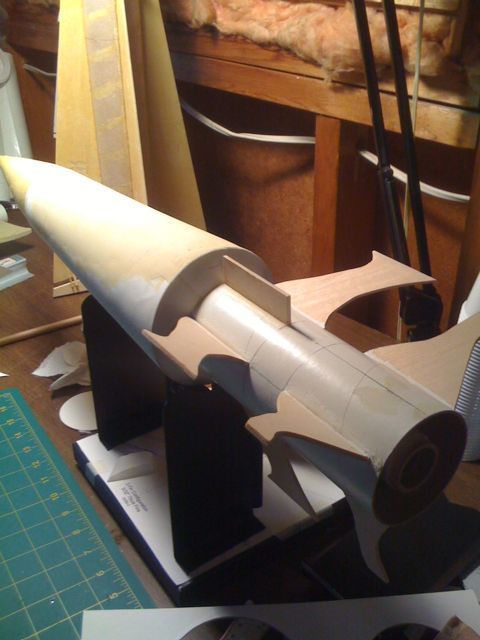
Bottom Section
2011-06-21
I made the bottom section with two paper shrouds and two center rings. The centering rings had to be cut and fitted back around the body tube to get around the fins. Having them on beforehand would have interfered with using the alignment tool.
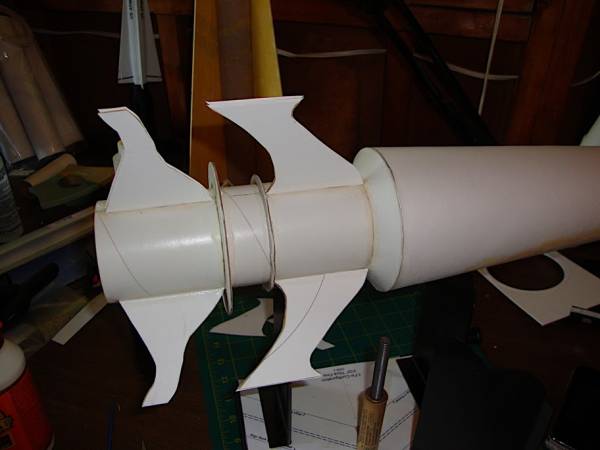
The top shroud was easy enough to add, but the bottom part required more work. For that section I cut slots to fit over the fins, then Gorilla taped over the edges. I then filled the inside with two-part foam.
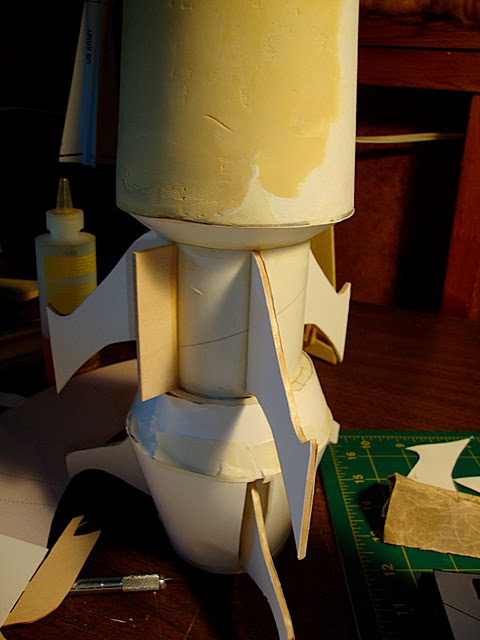
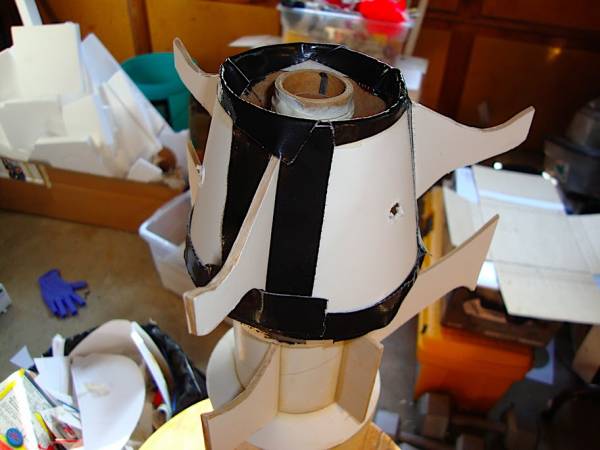
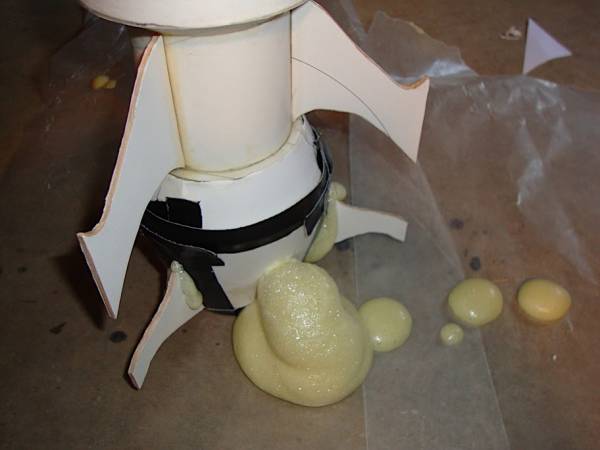
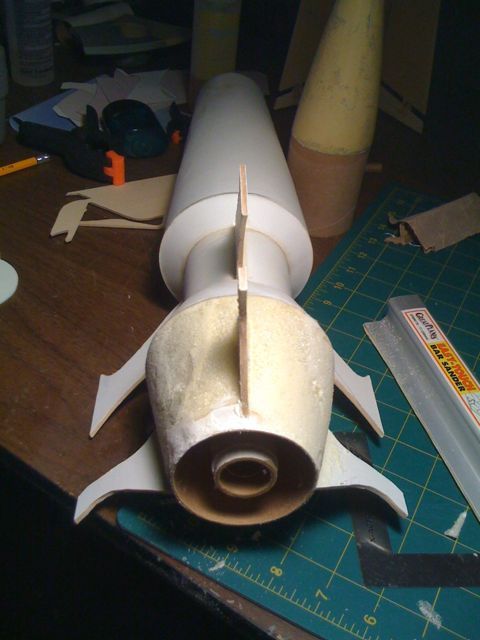
I made the pods out of several paper shrouds and tubes. the bottoms are from 1/16" illustration board. I formed the points with card stock as well. I probably should have used real nosecones, but from a distance they still look good.
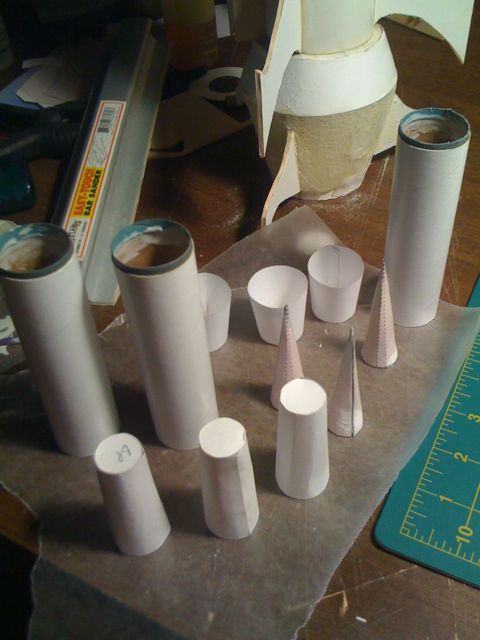
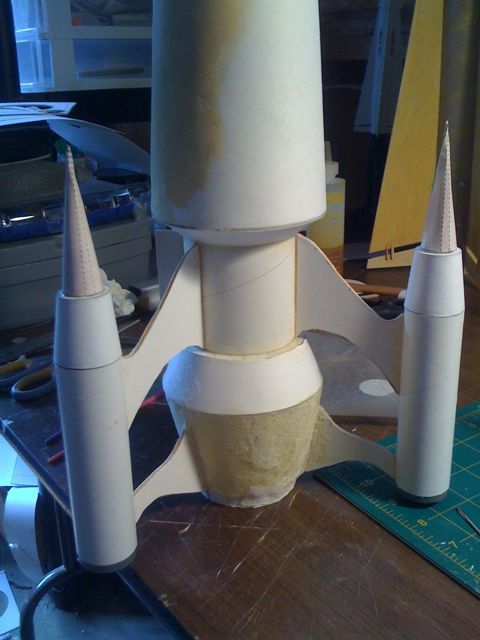
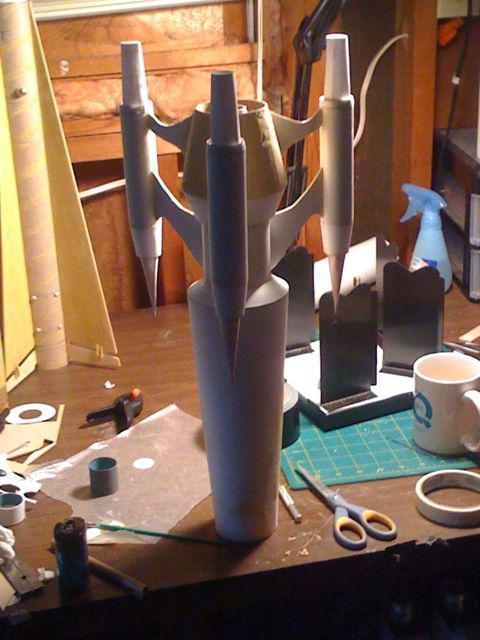
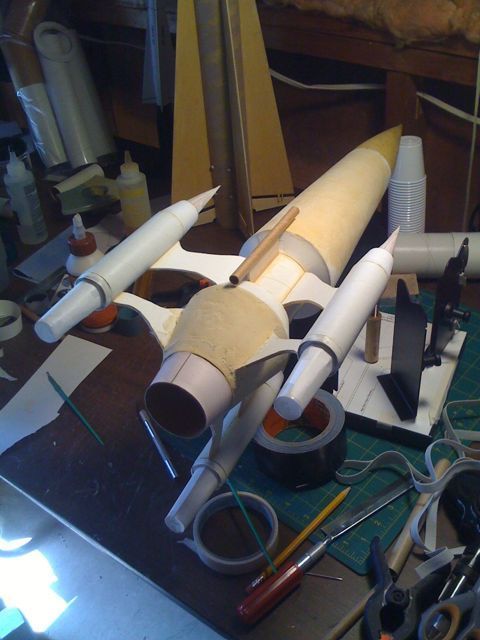
I made the tail cone from BT-70 tube and centering rings, plus a paper shroud.
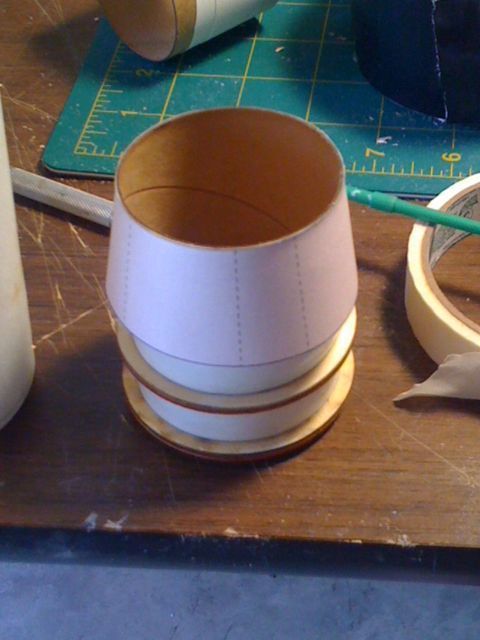
Finishing
2011-06-21
I used two coats of Krylon primer. I painted the body with Krylon gloss red, white and grey. I handpainted black around the pod points trying to give an illusion of depth, but didn't work as well as I thought it might. I coated everything with Krylon clear coat.
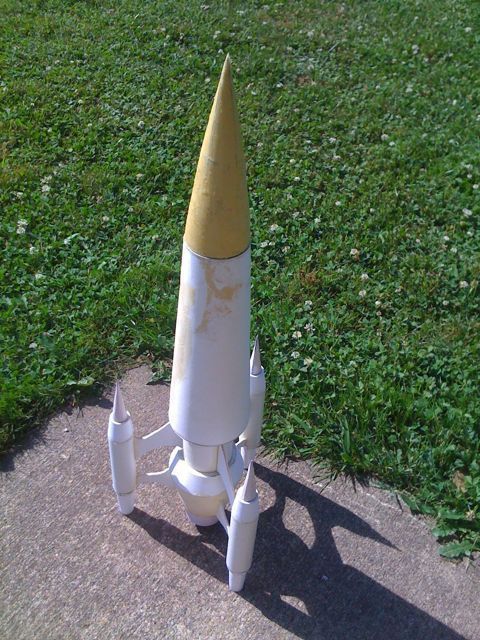
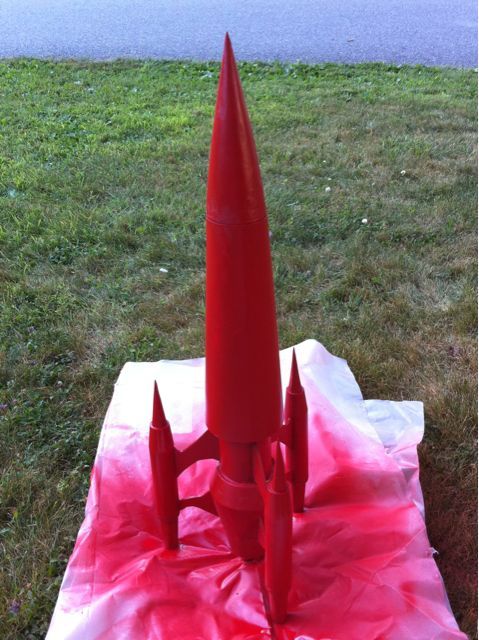
Rocksim Graphics
2011-06-21
Here are a few views from Rocksim.

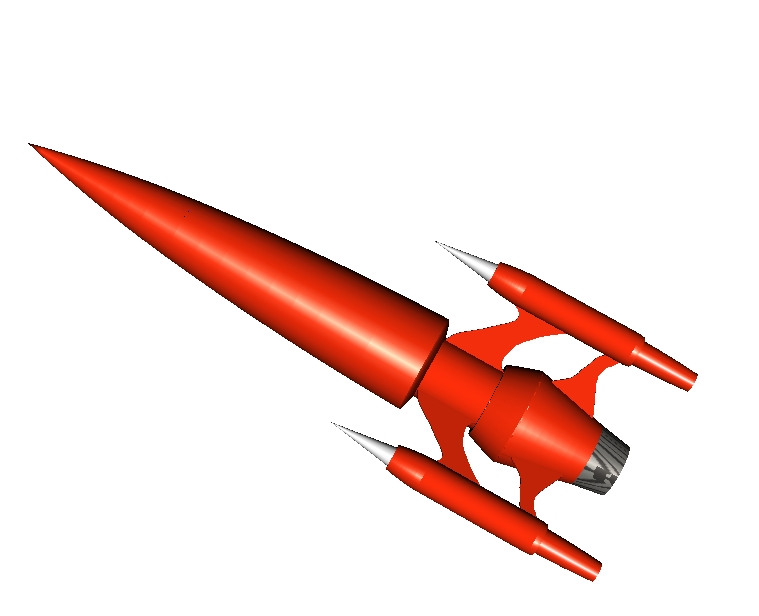
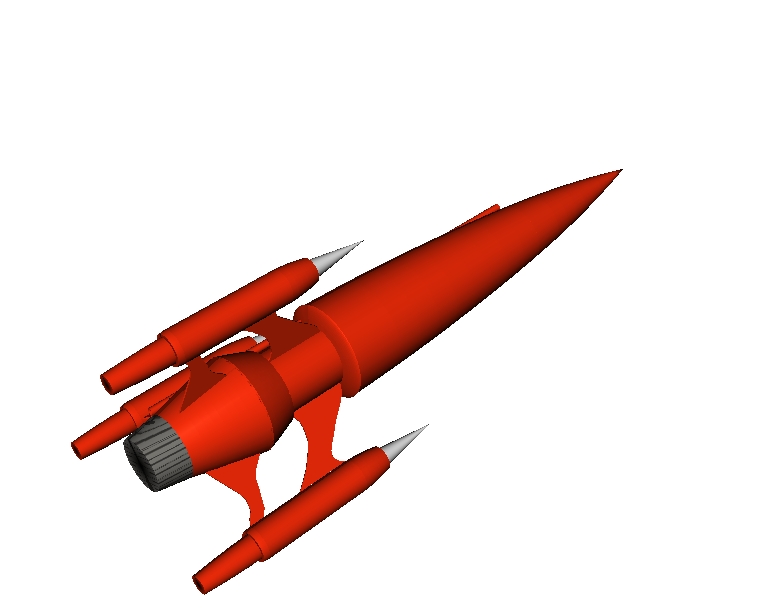
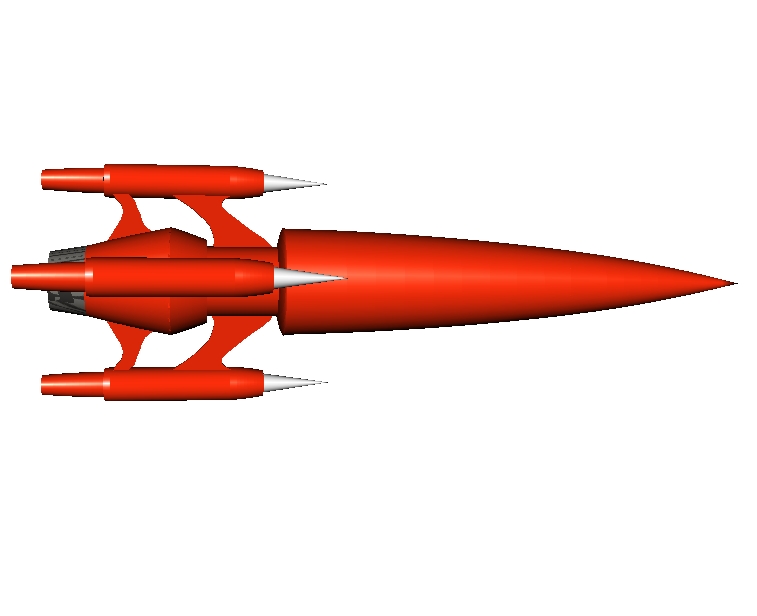
 |
 |
